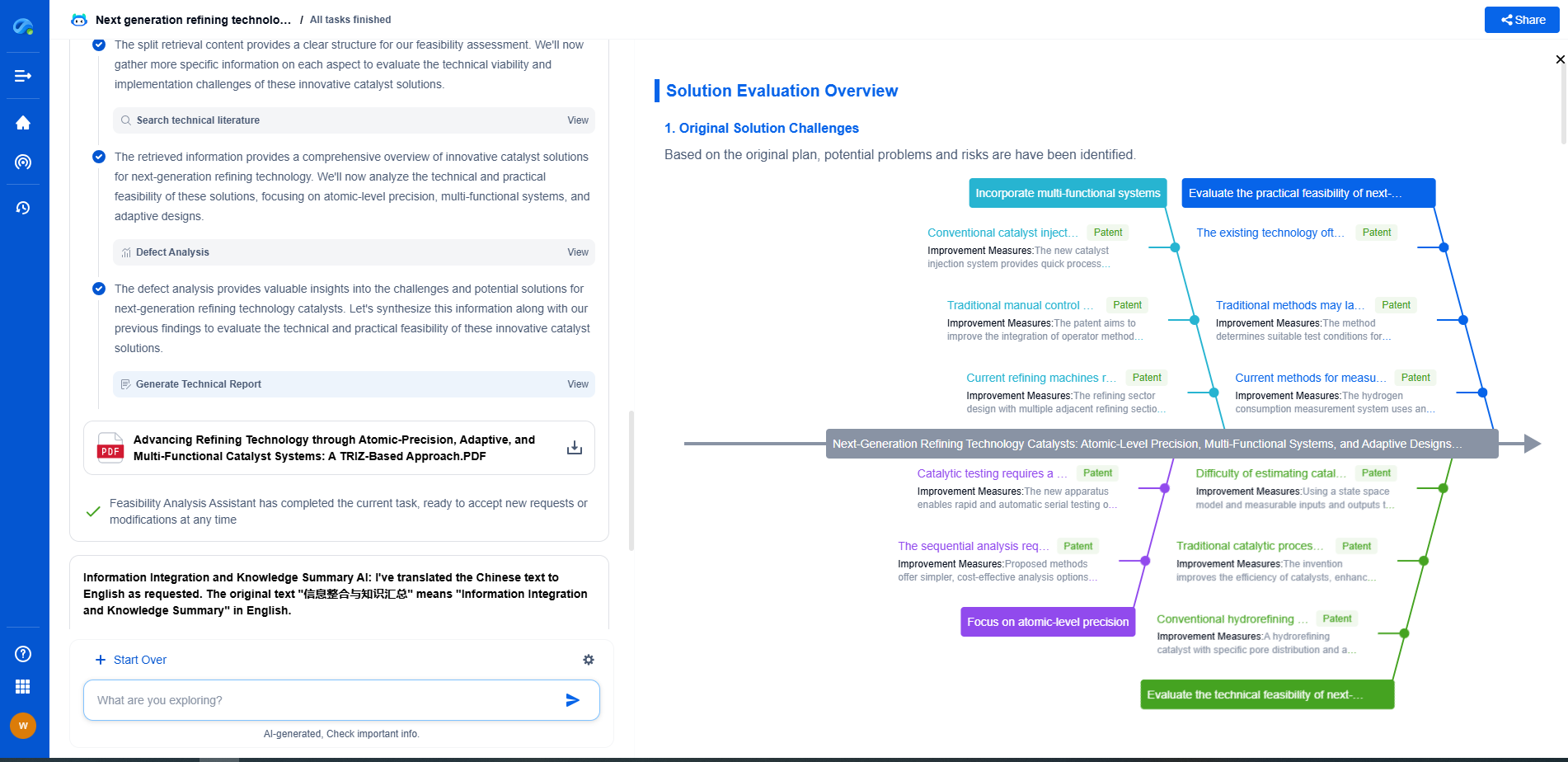What is speed and separation monitoring in collaborative robots?
JUN 26, 2025 |
Understanding Speed and Separation Monitoring
Speed and separation monitoring (SSM) is a safety function used in collaborative robot applications to prevent collisions and ensure safe interactions between humans and robots. Unlike traditional industrial robots that operate in isolated environments, cobots are designed to work in close proximity to humans. This necessitates robust safety measures to mitigate risks and enhance productivity.
At its core, SSM is a dynamic adjustment mechanism that controls the robot's speed and trajectory based on the real-time distance between the robot and human workers. By continuously monitoring this distance, SSM systems can reduce the robot's speed or bring it to a complete stop when a human enters a predefined safety zone. This process helps maintain a safe working environment while allowing the robot to resume its tasks as soon as the space is cleared.
Components of Speed and Separation Monitoring
The implementation of speed and separation monitoring involves several key components:
1. Sensors and Cameras: High-precision sensors and cameras are used to detect and monitor the position of humans and objects within the robot's workspace. These devices feed real-time data to the robot's control system, enabling swift and accurate responses to changing environments.
2. Control Systems: The control system processes the data received from sensors, continuously assessing the distance between the robot and humans. Advanced algorithms are employed to adjust the robot's speed, ensuring compliance with safety standards while optimizing performance.
3. Safety Zones: A key aspect of SSM is the definition of safety zones around the robot. These zones are virtual boundaries set at varying distances from the robot, triggering different responses based on human proximity. For instance, a warning zone may initiate a speed reduction, while a protective stop zone pauses the robot's movements.
The Importance of Speed and Separation Monitoring
Safety is paramount in any collaborative robot application. By integrating SSM, industries can achieve a balance between efficiency and human well-being. Here are some significant benefits of speed and separation monitoring:
1. Enhanced Safety: SSM significantly reduces the risk of collisions and accidents, protecting human workers from potential harm. This safe environment fosters trust and encourages broader adoption of collaborative robotics in various industries.
2. Increased Productivity: By allowing robots to operate at higher speeds when humans are not in close proximity, SSM enhances productivity without compromising safety. This dynamic adjustment ensures that robots are utilized to their fullest potential.
3. Compliance with Standards: Adhering to industry standards and regulations is crucial for any automation implementation. SSM helps companies comply with safety standards, such as ISO/TS 15066, which outlines safety requirements for collaborative robots.
Challenges and Considerations
While speed and separation monitoring offers numerous advantages, it also presents challenges that need to be addressed:
1. Sensor Reliability: The effectiveness of SSM relies heavily on the accuracy and reliability of sensors. Ensuring that sensors are well-calibrated and resistant to environmental factors is crucial for the system's overall performance.
2. Integration Complexity: Implementing SSM requires seamless integration with existing systems and processes. Companies must consider the complexity of integration and ensure that SSM complements their operational workflows.
3. Costs: The installation and maintenance of advanced sensors and control systems can be costly. Businesses need to weigh these expenses against the long-term benefits of enhanced safety and productivity.
The Future of Collaborative Robotics with SSM
As technology continues to advance, the future of collaborative robotics with speed and separation monitoring looks promising. Innovations in sensor technology, artificial intelligence, and machine learning are expected to further improve the efficiency and accuracy of SSM systems. This, in turn, will lead to even safer and more productive collaborative workspaces.
In conclusion, speed and separation monitoring is a vital component of collaborative robotics, ensuring safe and efficient human-robot interactions. By understanding and implementing SSM, industries can harness the full potential of cobots, paving the way for a more automated and harmonious future in the workplace.
Ready to Redefine Your Robotics R&D Workflow?
Whether you're designing next-generation robotic arms, optimizing manipulator kinematics, or mining patent data for innovation insights, Patsnap Eureka, our cutting-edge AI assistant, is built for R&D and IP professionals in high-tech industries, is built to accelerate every step of your journey.
No more getting buried in thousands of documents or wasting time on repetitive technical analysis. Our AI Agent helps R&D and IP teams in high-tech enterprises save hundreds of hours, reduce risk of oversight, and move from concept to prototype faster than ever before.
👉 Experience how AI can revolutionize your robotics innovation cycle. Explore Patsnap Eureka today and see the difference.
- R&D
- Intellectual Property
- Life Sciences
- Materials
- Tech Scout
- Unparalleled Data Quality
- Higher Quality Content
- 60% Fewer Hallucinations
Browse by: Latest US Patents, China's latest patents, Technical Efficacy Thesaurus, Application Domain, Technology Topic, Popular Technical Reports.
© 2025 PatSnap. All rights reserved.Legal|Privacy policy|Modern Slavery Act Transparency Statement|Sitemap|About US| Contact US: help@patsnap.com

